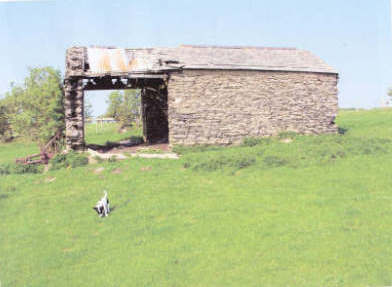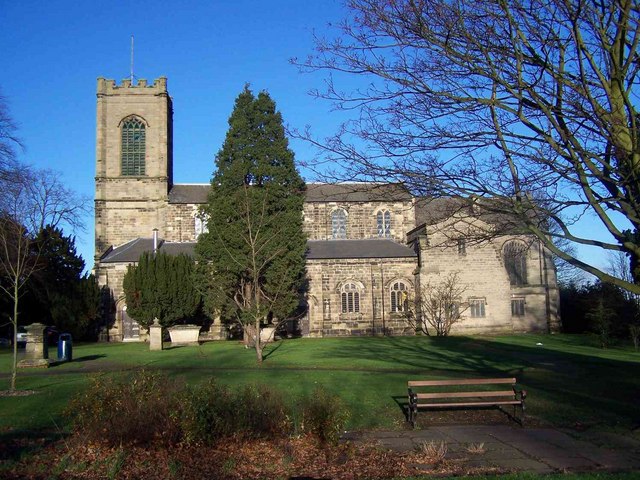|
Duddon Furnace
The Duddon furnace (Grid Reference SD 197883) is a surviving charcoal-fuelled blast furnace near Broughton-in-Furness in Cumbria. It is on the west side of the River Duddon in the parish of Millom and formerly in Cumberland. History The furnace was originally established as a joint venture of the Cunsey Company and the Backbarrow Company in 1736,Lancashire Record Office, DDSa 38/3. but the Backbarrow Company sold their share to the Cunsey Company in 1741. The Cunsey Company already owned Cunsey Furnace and Spark Forge, but they closed Cunsey Furnace in 1750, thus becoming the Duddon Company. The partners in the Cunsey Company in 1737 were Edward Hall of Cranage, Warine Falkner of Rugeley, Thomas Cotton of Eardley ( Cheshire) and Edward Kendall of Stourbridge. Following the deaths of several partners, the firm became Jonathan Kendall & Co. They also built Argyll Furnace (also called Craleckan or Goatfield) in 1755. The ironworks was managed by William Latham, who betwe ... [...More Info...] [...Related Items...] OR: [Wikipedia] [Google] [Baidu] |
Cranage
Cranage is a village and civil parish in the unitary authority of Cheshire East and the ceremonial county of Cheshire, England. According to the 2001 Official UK Census, the population of the entire civil parish was 1,131 which had risen to 1,184 by the 2011 census. History The establishment of a community in Cranage is mentioned in the Domesday Book. The name derives from the Old English of ''Crāwena-læcc'', which means ''crows stream''. The manor of Cranage, unlike many estates, has not remained in one family but had changed hands many times. Historically, Cranage was an agricultural area which had a wide variation of farming activities. Cranage Hall was one of the principal dwellings in the area. It is believed that it was built in the 17th century incorporating elements of an earlier hall. Lawrence Armistead had the Hall demolished in the 19th century and the current Cranage Hall built in 1829, to a design by Lewis Wyatt. The Hall remained in possession of the Armistea ... [...More Info...] [...Related Items...] OR: [Wikipedia] [Google] [Baidu] |
Tourist Attractions In Cumbria
Tourism is travel for pleasure or business; also the theory and practice of touring, the business of attracting, accommodating, and entertaining tourists, and the business of operating tours. The World Tourism Organization defines tourism more generally, in terms which go "beyond the common perception of tourism as being limited to holiday activity only", as people "travelling to and staying in places outside their usual environment for not more than one consecutive year for leisure and not less than 24 hours, business and other purposes". Tourism can be domestic (within the traveller's own country) or international, and international tourism has both incoming and outgoing implications on a country's balance of payments. Tourism numbers declined as a result of a strong economic slowdown (the late-2000s recession) between the second half of 2008 and the end of 2009, and in consequence of the outbreak of the 2009 H1N1 influenza virus, but slowly recovered until the COVID-19 ... [...More Info...] [...Related Items...] OR: [Wikipedia] [Google] [Baidu] |
Ruins In Cumbria
Ruins () are the remains of a civilization's architecture. The term refers to formerly intact structures that have fallen into a state of partial or total disrepair over time due to a variety of factors, such as lack of maintenance, deliberate destruction by humans, or uncontrollable destruction by natural phenomena. The most common root causes that yield ruins in their wake are natural disasters, armed conflict, and population decline, with many structures becoming progressively derelict over time due to long-term weathering and scavenging. There are famous ruins all over the world, with notable sites originating from ancient China, the Indus Valley and other regions of ancient India, ancient Iran, ancient Israel and Judea, ancient Iraq, ancient Greece, ancient Egypt, Roman sites throughout the Mediterranean Basin, and Incan and Mayan sites in the Americas. Ruins are of great importance to historians, archaeologists and anthropologists, whether they were once individual forti ... [...More Info...] [...Related Items...] OR: [Wikipedia] [Google] [Baidu] |
Ironworks And Steelworks In England
An ironworks or iron works is an industrial plant where iron is smelted and where heavy iron and steel products are made. The term is both singular and plural, i.e. the singular of ''ironworks'' is ''ironworks''. Ironworks succeeded bloomeries when blast furnaces replaced former methods. An integrated ironworks in the 19th century usually included one or more blast furnaces and a number of puddling furnaces or a foundry with or without other kinds of ironworks. After the invention of the Bessemer process, converters became widespread, and the appellation steelworks replaced ironworks. The processes carried at ironworks are usually described as ferrous metallurgy, but the term siderurgy is also occasionally used. This is derived from the Greek words ''sideros'' - iron and ''ergon'' or ''ergos'' - work. This is an unusual term in English, and it is best regarded as an anglicisation of a term used in French, Spanish, and other Romance languages. Historically, it is common ... [...More Info...] [...Related Items...] OR: [Wikipedia] [Google] [Baidu] |
Blowing Cylinders
Blowing may refer to: * Air *Breath *Blowing by a whale, from blowhole (anatomy) Industrial processes *Blowing (glassmaking) *Blowing (textile finishing) *Dry blowing Dry blowing is a method to extract gold particles from dry soil without the use of water. A machine specialized to use this method is known as a dry blower. It is a form of winnowing. Methods *One method is to pour dry soil from a height into a ..., method to extract gold particles from dry soil without the use of water * Melt blowing, fabrication method of micro-and nanofibers through extrusion Other * ''Blowing'' (album), Japanese-language album by Tokio {{dab ... [...More Info...] [...Related Items...] OR: [Wikipedia] [Google] [Baidu] |
Harrison Ainslie
The firm of Harrison Ainslie & Co. was a British firm of ironmasters and iron ore merchants, selling high quality haematite from their mines on Lindal Moor to smelters in Glasgow, Scotland, South Wales and the Midlands. From a 21st-century perspective, they are more interesting as the last operators of charcoal-fired blast furnaces in Great Britain. Their furnaces were stone-built, water-powered, and much smaller than the coke-fired furnaces of the same era. Managers At various times the company was known as Richard Ford & Co, the Newland Co, George Knott & Co, Knott, Ainslie & Co, Harrison Ainslie & Co, Harrison Ainslie, Roper & Co, and finally as Harrison Ainslie & Co Ltd. Associated companies were the Hampshire Haematite Iron Co, Melfort Gunpowder Co, Lorn Furnace Co and Barrow & Ulverston Rope Co. Newland Furnace was built in 1747 by Richard Ford, William Ford, Michael Knott and James Backhouse. Richard Ford was born in Middlewich in 1697. He was active in the Furness ir ... [...More Info...] [...Related Items...] OR: [Wikipedia] [Google] [Baidu] |
Chepstow
Chepstow ( cy, Cas-gwent) is a town and community in Monmouthshire, Wales, adjoining the border with Gloucestershire, England. It is located on the tidal River Wye, about above its confluence with the River Severn, and adjoining the western end of the Severn Bridge. It is the easternmost settlement in Wales, situated east of Newport, east-northeast of Cardiff, northwest of Bristol and west of London. Chepstow Castle, situated on a clifftop above the Wye and its bridge, is often cited as the oldest surviving stone castle in Britain. The castle was established by William FitzOsbern immediately after the Norman conquest, and was extended in later centuries before becoming ruined after the Civil War. A Benedictine priory was also established within the walled town, which was the centre of the Marcher lordship of Striguil. The port of Chepstow became noted in the Middle Ages for its imports of wine, and also became a major centre for the export of timber and bark, from ... [...More Info...] [...Related Items...] OR: [Wikipedia] [Google] [Baidu] |
Furnace, Argyll And Bute
Furnace ( gd, An Fhùirneis) (formerly Inverleacainn ( gd, Inbhir Leacainn)) is a village in Argyll and Bute, on the west coast of Scotland, on the north shore of Loch Fyne, the longest sea loch in the United Kingdom. Furnace is around eight miles southwest of Inveraray on the A83 road. It is unusual for a West Highland village in having an industrial past in addition to the usual focus on agriculture and fishing. Industrial activity was led by three main businesses: the iron furnace, the powdermills and the quarry. Ironworks The ironworks were founded in 1755 by the Duddon Company of Cumbria, drawn by the local forest capable of supplying the charcoal needed in smelting iron. The village, then called Inverleacainn (the mouth of the River Leacainn) gradually took on the shorthand name of ‘the furnace’ and finally, simply ‘Furnace’. The furnace itself shut down in 1812, upon the expiry of a 57-year lease from the Duke of Argyll. The Duddon Company was bought by Harrison ... [...More Info...] [...Related Items...] OR: [Wikipedia] [Google] [Baidu] |
Stourbridge
Stourbridge is a market town in the Metropolitan Borough of Dudley in the West Midlands, England, situated on the River Stour. Historically in Worcestershire, it was the centre of British glass making during the Industrial Revolution. The 2011 UK census recorded the town's population as 63,298. Geography Stourbridge is about west of Birmingham. Sitting within the Metropolitan Borough of Dudley at the southwestern edge of the Black Country and West Midlands conurbation, Stourbridge includes the suburbs of Amblecote, Lye, Norton, Oldswinford, Pedmore,Stambermill, Stourton, Wollaston, Wollescote and Wordsley. Much of Stourbridge consists of residential streets interspersed with green spaces. Mary Stevens Park, opened in 1931, has a lake, a bandstand, a cafe, and a mixture of open spaces and woodland. Bordered by green belt land, Stourbridge is close to countryside with the Clent Hills to the south and southwest Staffordshire and Kinver Edge to the west. Closest cities, tow ... [...More Info...] [...Related Items...] OR: [Wikipedia] [Google] [Baidu] |
Cheshire
Cheshire ( ) is a ceremonial and historic county in North West England, bordered by Wales to the west, Merseyside and Greater Manchester to the north, Derbyshire to the east, and Staffordshire and Shropshire to the south. Cheshire's county town is the cathedral city of Chester, while its largest town by population is Warrington. Other towns in the county include Alsager, Congleton, Crewe, Ellesmere Port, Frodsham, Knutsford, Macclesfield, Middlewich, Nantwich, Neston, Northwich, Poynton, Runcorn, Sandbach, Widnes, Wilmslow, and Winsford. Cheshire is split into the administrative districts of Cheshire West and Chester, Cheshire East, Halton, and Warrington. The county covers and has a population of around 1.1 million as of 2021. It is mostly rural, with a number of towns and villages supporting the agricultural and chemical industries; it is primarily known for producing chemicals, Cheshire cheese, salt, and silk. It has also had an impact on popular culture, producin ... [...More Info...] [...Related Items...] OR: [Wikipedia] [Google] [Baidu] |
Rugeley
Rugeley ( ) is a market town and civil parish in the Cannock Chase District in Staffordshire, England. It lies on the north-eastern edge of Cannock Chase next to the River Trent; it is situated north of Lichfield, south-east of Stafford, north-east of Hednesford and south-west of Uttoxeter. At the 2021 Census, the population was 24,386. Rugeley is twinned with Western Springs, Illinois and, in July 1962, the towns made telephone history on national television when the chairman of Rugeley Urban District Council made the first telephone call via the new Telstar satellite to the Mayor of Western Springs. It was also featured in an article about workers' rights and town transformation in the 21st century. History The town, historically known as Rudgeley or Ridgeley, is listed in the Domesday Book of 1086. This name is thought to be derived from 'Ridge lee', or 'the hill over the field'. In the mediaeval period, it thrived on iron workings and was also a site of glass manufac ... [...More Info...] [...Related Items...] OR: [Wikipedia] [Google] [Baidu] |






